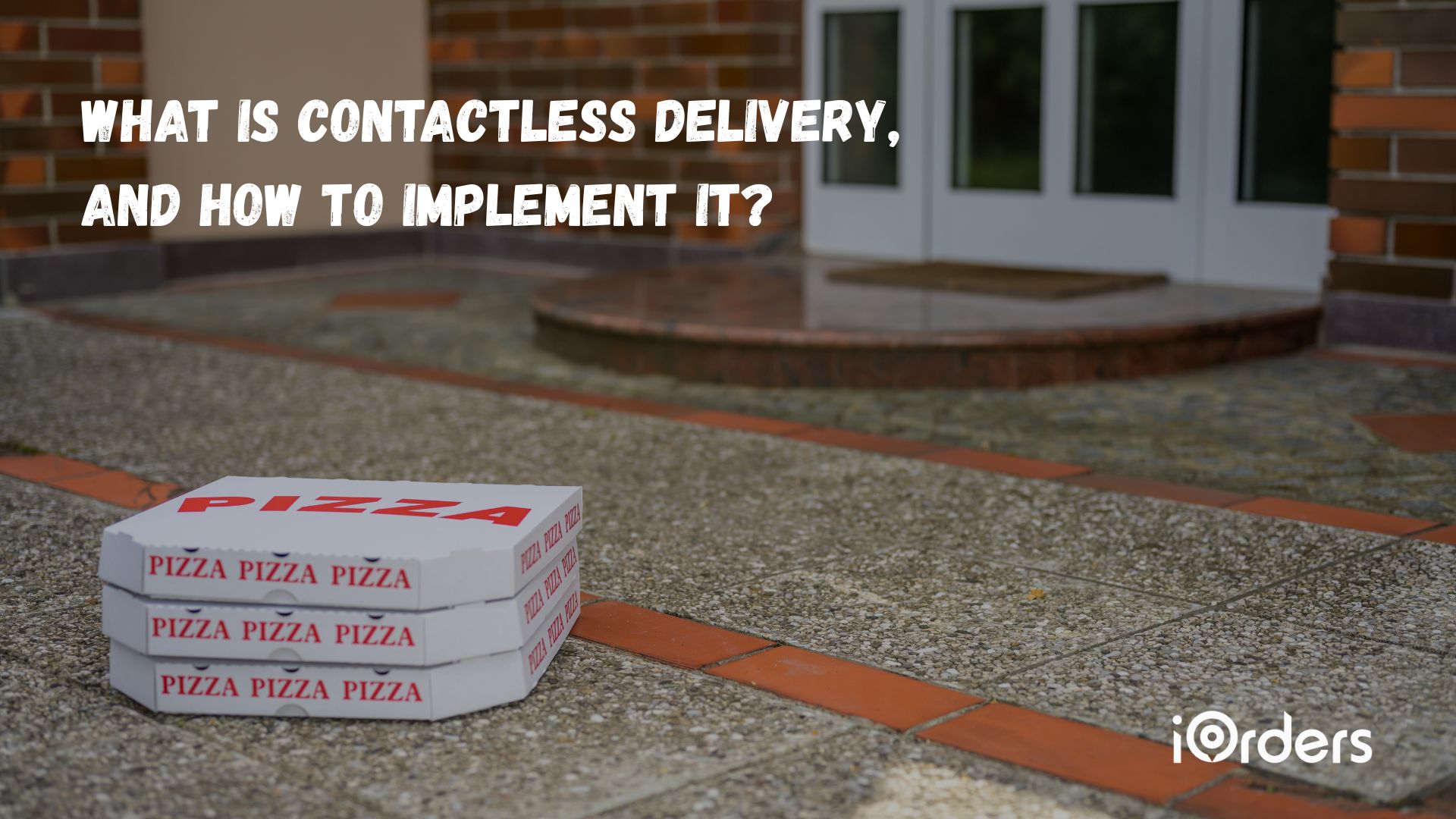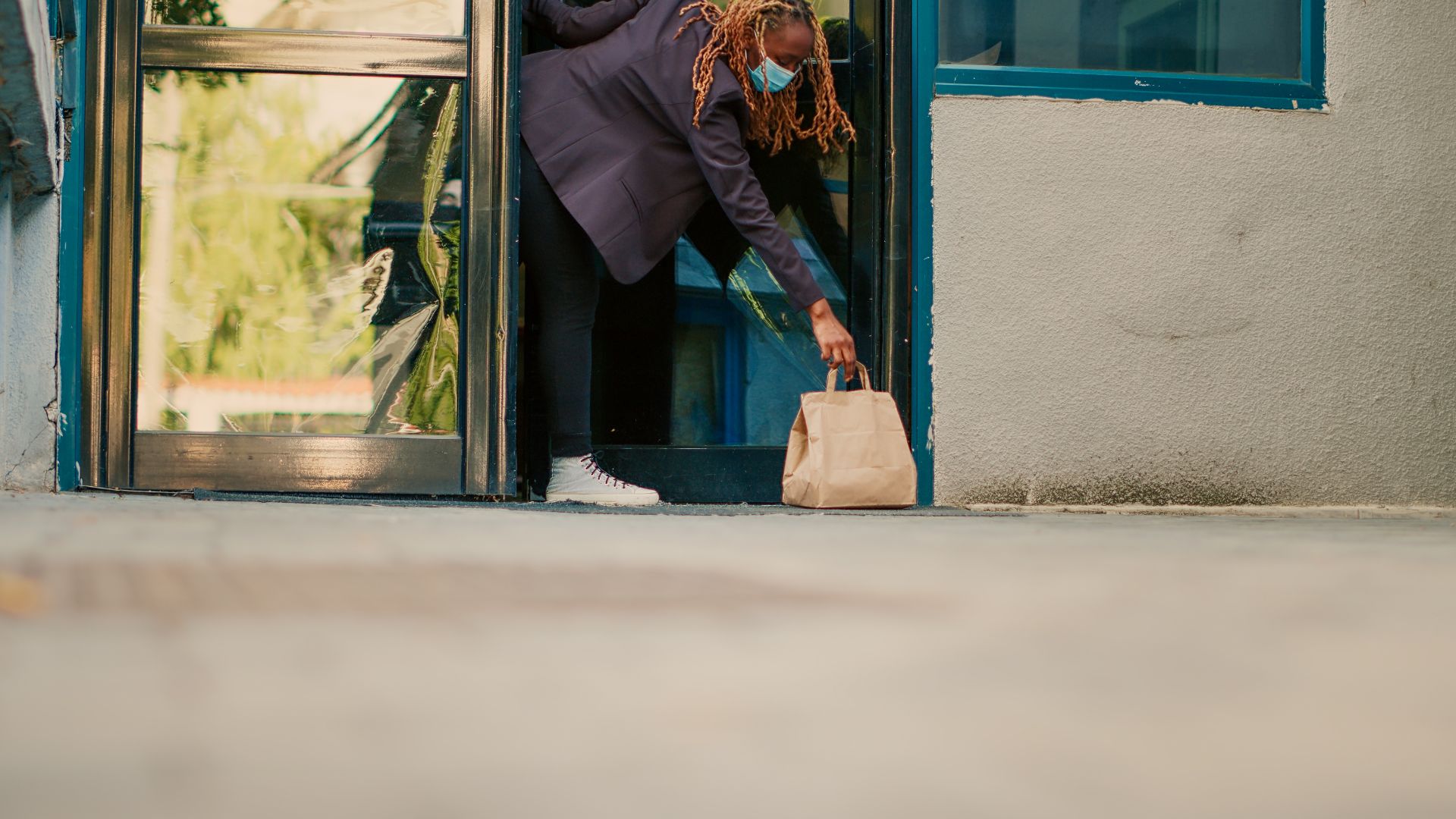July 18, 2025

Going contactless became the new norm during the COVID-19 pandemic, and for many, it’s still the preferred way to receive food. What started as a safety measure has turned into a lasting habit, with about 87% of U.S. consumers saying they want restaurants to continue offering contactless delivery.
This shift reflects the growing demand for convenience, hygiene, and smooth digital ordering experiences. So, if you’re starting a restaurant or considering home delivery, knowing how to offer contactless orders isn’t just a bonus; it’s essential.
In this article, we’ll explain what contactless delivery really means, how it works step by step, the tools you’ll need, and how to implement it smoothly to meet modern diners' expectations.

Contactless delivery is a method of delivering food or goods without any direct, face-to-face interaction between the customer and the delivery person. Instead of handing over the order in person, the delivery driver leaves it at a pre-designated spot, like a doorstep, reception desk, or delivery box, and then notifies the customer that it has arrived.
At its core, contactless delivery focuses on three main components:
It’s not just about safety anymore. Contactless delivery has become the gold standard for speed, simplicity, and customer peace of mind.
Contactless delivery plays a key role in how food is ordered and received today for both safety and convenience. Here’s why it matters:
These benefits reflect why contactless delivery has become a common expectation for today’s diners, offering a safer, faster, and smoother experience from start to finish.
So, how does contactless delivery actually work in practice? Let’s break it down and have a look.
Also read: Choosing the Best Food Delivery Service Apps in 2025
.jpg)
More than just a no-touch drop-off, contactless delivery is a carefully coordinated system that blends logistics, technology, and customer experience. The goal is to reduce friction, increase order accuracy, and speed up fulfillment, all while keeping health and safety in check.
Here’s how a smooth contactless process comes together, step by step:
The customer places an order through a restaurant website, app, or third-party delivery platform. During checkout, they select “contactless delivery” and may be prompted to leave specific drop-off instructions, like “leave at the front door” or “place at the gate.”
Once the order is confirmed, the delivery driver is notified and instructed to follow no-touch protocols. This means no direct handoff, no physical signatures, and minimal contact with surfaces.
Upon arrival, the driver places the order at the requested location. To confirm the delivery, they may take a photo of the package in its spot or use a digital tool like an app-based signature or OTP.
The customer receives an alert via text, app notification, or call, letting them know the order has been delivered and where it was left.
After pickup, customers are often prompted to leave feedback. This helps businesses improve the experience and quickly address any issues.
It’s fast, transparent, and built for today’s delivery expectations.
Contactless delivery wouldn’t be possible without the right technology working behind the scenes. Here are the key tools that make it all run smoothly:
Together, these tools create a reliable, hands-free experience that not only keeps deliveries safe and organized but also gives customers confidence every step of the way.
For restaurants ready to meet modern customer expectations, the next step is making contactless delivery part of your operations; here’s how to do it right.
.jpg)
Contactless delivery isn’t just about leaving food at the door; creating a smooth, safe, and trustworthy experience from start to finish is key here. That takes thoughtful planning, the right tools, and clear communication across your team.
Here’s how to implement it:
Begin with the basics. Make sure your staff and drivers follow strict hygiene standards. Provide PPE like masks and gloves, reinforce frequent handwashing, and offer hygiene training to build consistent habits across your team.
Upgrade your POS, delivery apps, and internal tools to include features such as integrated real-time tracking modules, secure contactless payment gateways like UPI or mobile wallets, and reliable proof-of-delivery systems, including photo capture or OTP verification.
Everyone involved should understand exactly how contactless delivery works. Use checklists, walkthroughs, and even role-playing scenarios to train your team on what to do during pickup, transport, and drop-off.
Use tamper-proof seals, spill-resistant packaging, and easy-to-carry bags. Make sure orders are clearly labeled, secure, and ready for smooth, contact-free drop-offs.
Let customers know contactless delivery is available. Include messaging at checkout, on your website or app, and in social media promotions. Give clear instructions on how it works so there’s no confusion at the door.
Start small with a pilot program or a limited delivery radius. Collect feedback from staff and customers, then tweak your process as needed. Small improvements can lead to a smoother, more reliable service over time.
By following these steps, restaurants can build a contactless delivery system that’s not only safe and efficient but also leaves a lasting impression on customers. But once the system is in place, the real difference lies in the execution.
.jpg)
Even with the right systems in place, the small details can make or break the contactless delivery experience. Here’s what to keep in mind:
Best Practices
Common Pitfalls
Simple Solutions
By avoiding common missteps and focusing on customer ease, restaurants can offer a contactless experience that’s as reliable as it is convenient.
Nailing the customer experience is just one part of the equation. To truly know if your contactless delivery efforts are paying off, you need to track the right metrics and adjust accordingly.
Tracking the right metrics helps you understand what’s working and where there’s room to improve. Focus on the following:
Any process benefits from improving over time. When you regularly measure performance and adapt to customer needs, you create a more dependable and enjoyable experience for everyone involved.
And, as contactless delivery continues to evolve, staying ahead means understanding where the industry is headed next.
Also read: 50+ Restaurant Survey Questions to Improve Guest Experience
.jpg)
Contactless delivery isn’t just a pandemic-era fix; today, it’s shaping the future of how food gets to our doors. Here’s a look at how cutting-edge tech is reshaping contactless delivery:
Students and staff place orders via the Starship app, choose a drop-off location, and watch the robot navigate to them, complete with live tracking and no human contact.
From there, Wing’s autonomous drones take over to fly orders directly to customers’ doorsteps, significantly expanding reach and reducing delivery times in suburban and hard-to-reach areas.
Flytrex’s drones, capable of carrying up to 6.6 lb, deliver orders within minutes. Coverage includes suburban backyards in Little Elm and Frisco and is available between 8 a.m. and 9:30 p.m.
From AI-powered robots to drone-facilitated backyard drop-offs, the future of contactless delivery looks a lot like science fiction. But this is quickly becoming the new standard for speed, safety, and convenience in food service.
Thinking of launching or upgrading your contactless delivery service, but don’t want the hassle of managing all the logistics? You’ll need a reliable partner to make it simple, seamless, and stress-free.
Managing your own drivers isn’t always feasible, but giving up delivery control to third-party apps can cut deep into your profits.
iOrders bridges that gap with its Delivery-as-a-Service, allowing restaurants to offer fast, reliable delivery without hiring an in-house fleet or handing off branding to a third party. The entire delivery experience stays seamless and restaurant-branded, so customers see only your name from order to doorstep.
Behind the scenes, iOrders connects you with trusted third-party delivery partners, handling the logistics without charging commissions on order value. Unlike integrations with services like DoorDash Drive or Uber Direct, where commissions can eat into margins, iOrders charges a flat fee per delivery, keeping your costs predictable and your profits protected.
At its core, iOrders is a comprehensive digital platform built specifically for restaurants to streamline online ordering, delivery, and marketing. It acts as the tech layer behind your operations, managing everything from order flow and POS integration to real-time customer notifications. Orders feed directly into your POS system, eliminating the need for manual entry and reducing errors.
Restaurants can manage all orders and deliveries through a centralized dashboard, improving operational efficiency across the board. Plus, iOrders offers commission-free online ordering through a fully branded system, so you maintain complete control over the customer experience, from browsing to checkout, without sacrificing a percentage of your revenue.
Our platform gives you the tools to grow on your own terms. Beyond delivery, iOrders’ complete suite of tools also includes the following:
With iOrders, contactless delivery is just a part of a bigger strategy to grow your brand, boost profitability, and connect directly with your customers.
Over the years, contactless delivery has turned out to be a lasting shift in how people expect to order and receive food. From health and safety to convenience and efficiency, going contactless can elevate the entire customer experience.
With the right systems in place, it can make operations smoother for restaurants, too. iOrders helps you with that.
With Delivery-as-a-Service, commission-free ordering, and a full suite of digital tools, iOrders empowers restaurants to build strong, direct customer relationships while cutting out unnecessary costs. If you’re ready to offer smarter, more efficient delivery without giving up control, iOrders is the partner that helps you grow on your own terms.
Want to deliver smarter? Book a demo with iOrders today and see how our all-in-one platform can simplify contactless delivery while maximizing your profits.
Contactless delivery is when a driver drops off an order without any face-to-face interaction, usually by leaving it at a specified location and notifying the customer digitally.
Clear communication, real-time tracking, and reliable proof-of-delivery tools (like photos or OTPs) help ensure that customers know exactly where and when their food has arrived without confusion or delays.
Yes, it’s considered safer than traditional delivery since it reduces physical contact and helps prevent the spread of germs, especially when combined with proper hygiene and sealed packaging.
Potential drawbacks include missed deliveries due to unclear drop-off instructions, weather exposure for unattended orders, or reduced opportunity for real-time issue resolution.
Generally, no. Most restaurants and delivery platforms offer contactless delivery as a free option, though some may charge extra for advanced tracking or specific delivery preferences.